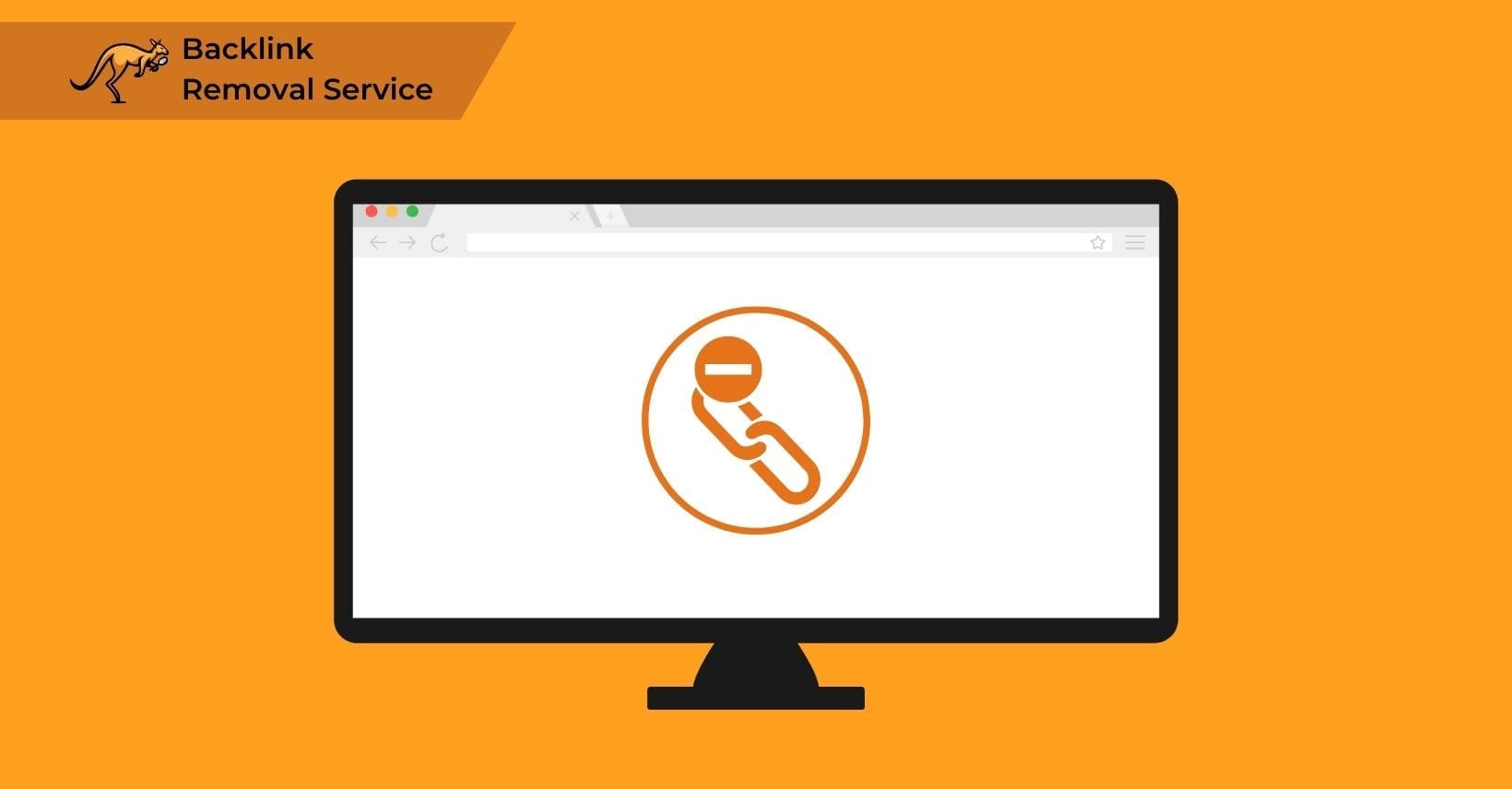How Much Do You Need to Spend?
SEO and Link building is one of the most effective ways to get your site into the SERPs.
And yeah, it’s possible to rank in your target keyword’ SERPs, but reaching the top is another matter entirely. For that, you need authoritative backlinks.
This means there’s no question on whether you should run the extra mile and set up a link-building campaign by your own in-house team or outsource it to a professional.
The real question is: how much money you’ll need to get the results you want.
So, let’s take a look at how to evaluate your website’s link-building budget properly and what different factors you should take into account.
A Summary
Before we start, we usually take care of this for you in our Anchor Text Strategy Consultation, meaning everything that we explain here, and a real analysis of exactly which types, how many links you’ll need, and the kind of site you should target in your campaign based on your, and your competitors, data.
First, get into link building if you haven’t, and start analysing the links your site already has. We mean taking a look at the different backlink types, their sites’ authority, and anchor texts.
After that, you do the same thing with the backlink profile of each competitor you want to outrank. Knowing their backlink profiles allows you to know the type and quantity of backlinks you’ll need to rank on top of them in Google’s SERPs.
Lastly, don’t forget to check out their link consistency: type, quality, the number of links, and recurrence. By doing this, you’ll exactly how regularly and how many you’ll need to build.
This gives you a monthly link building budget, a way to prepare and navigate how expensive link building can get.
Keep in mind that if you’re doing this already and your site is still not ranking on organic searches, despite a long time into your link-building campaign, you need to re-assess your profile.
By using Ahrefs to gather backlink data, let’s help you analyse your site’s current situation.
How Many Good Backlinks Does Your Site Have?
Aside from the number of links you have, we will determine their average quality based on the authority of its websites. Go to Ahrefs, and type in your domain URL on Site Explorer.
On the Overview page, you can see the number of backlinks and referring domains your site has.

Between referring domains and your site’s total number of backlinks, the former is the one you should pay attention to. Since Google only considers the domains that link to your site, having hundreds and thousands of links from the same domain has the same ranking value as having just one.
The site in the example has 257 referring domains in total and of different authorities.
So, we want to concentrate on the number of referring domains that actually matter when ranking.
For that, we click on the Link type drop-down menu and only filter the domains with do-follow links pointing to your site.

Next, you export the data into a CSV file, download it and open the file locally on your computer.
From here, we filter these results and look at how many sites at least have a 30 DR (Domain Rating).

As we can see, the site has 131 do-follow backlinks from sites with a Domain Rating over 30. Now it’s time for the next step.
Comparing Your Backlink Profile to Your Competitors
Determining your link building budget requires comparing your backlink profile to your niche’s organic competitors ranking above you on the SERPs. Competitors’ link profiles reveal exactly how many and what types of backlinks you’ll need to acquire, which directly translates to your required budget when multiplied by the cost per link in each domain rating range.
We need to determine our top competitors, and just like we did with our backlink profile, figure out how many do-follow links from DR 30+ sites they have. This way, we can know how many links we need to build.
There are many ways to go about this in Ahrefs, like:
Building links to specific pages on your site only
Just check the keywords where your site is not ranking on the first page of the SERPs.
In Organic search, go to Organic keywords and use the Position filter to choose the range from 11 to 20. This should give you the list of keywords you will need to focus on building links for your site.

Feel free to change the range of position to whatever you want. Just make sure to understand that the goal is to move up the SERPs by finding the site that ranks above you for those keywords.
Then just click on the keyword you’re interested in and scroll to analyse the SERP overview.

Of all of the information you’ll see here, the Domains column will give you the number of referring domains each ranking page has.
In some of the top-ranking pages, you can see some don’t have lots of backlinks. This is normal. The important part is to identify the ones that seem to have a link-building campaign running.
After this, we click on that domain, and we repeat the backlink analysis we did before with the same filters (do-follow and DR 30+), so we can compare against their best backlinks.
This approach is effective if you want to set up your link-building campaign as targeting specific competitors.
But you run the risk of targeting a page ranking above you for the same keyword whose domain is not an organic competitor but the only page for that domain that’s about the same topic as your website.
It’s better to:
Determine the topically related sites that rank for the same keywords
We go to Organic search > Competing domains in Ahrefs. This option will show you only the sites that share the same keywords ours is ranking for.

In the Common keywords, % column, the higher the percentage a site has, the more keywords it shares with your site on SERPs.
The idea is to choose the top competitors with the highest percentage to check their do-follow referring domains for the best links from their profile.
Which gives us this:

This competitor has 207 quality backlinks, that’s sixteen more than our example site.
This means that if you want to match their current link profile quality, you’ll have to buy that many DR30+ links. But that’s not the only thing we need to pay attention to.
We also need to check if the competitor has a link-building campaign currently running. We can check for any new backlinks the site has by going to Backlinks and filtering the results to only show new do-follow links above DR30 and narrow down the links we have to analyse. There we’ll find a list view of their site’s latest backlinks for the past three months.

The screenshot above shows that the site seems to be generating between 3-6 backlinks per week.
To better understand its long-term link-building strategy, assuming that it’s deliberate, we analyse the last 60 days.
Over these two months, only 53 of their new do-follow backlinks built are from DR30+ sites. That’s almost 26% of the total 207 backlinks that meet the quality criteria.
And this is our analysis of just one competitor. Once you achieve this amount and quality of backlinks, you’ll have to move on to the next one and start analysing again.
Yes, repeating this same process, one by one, until you have a backlink profile comparable to the competitor sitting at the top of the SERP, you want to improve your rank for.
And after that? Well, your competitors will go through this process to build new links and surpass your site’s ranking. And then you’re back to square one, analysing these new competitors that managed to get above you, over and over.
Another way to make this easier for you is by:
Using Ahrefs’ Link intersection feature

Here you can input as many competitor domains as you need, and this feature will analyse the backlinks they have that your site doesn’t.
If you want to analyse more than three competitors, just click the Add target button, input their domain, make sure to input your site’s domain as well, and click “Show link opportunities” to see the backlinks you don’t have.

After that, make sure to sort the results by DR, and you’re good to go. Just keep in mind that this method doesn’t have a way to identify backlinks that your competitors recently acquired. You’ll need to do it yourself by following the process we showed you above.
Other than that, this is the easiest and most efficient way of finding how many links you must build. You don’t have to analyse all your competitors using Link intersect – finding between three to five domains is more than enough to get you started.
As you can see in the screenshot above, Ahrefs found over 1,500 link opportunities among the three domains we input. After you take out the no-follow backlinks and low DR sites, you can expect to have around 300-500 high-quality links so you can build 50-60 per month.
Types of Links to Build
Now that you have completed the analysis of backlink opportunities to build for your site, you need to determine the type of backlinks your competitors have that your site doesn’t.
As you know, there are lots of backlink types that you can use. But these are the most popular ways for link building build these days:
Niche Edits or Editorial backlinks:
The link is located in the body of the content, making it the most popular and effective one out there and the hardest one to get.
Guest posts:
Here, the link is found at the end article and mostly in the author’s byline. The entire article must be relevant to the referring domain and the target URL. This is why they also tend to be difficult and take a long time to set up.
And sure, you also have your business profiles, social media or blog comments, and even forum posts. Nevertheless, Niche Edits and Guest Posts are proven to boost your search rankings regardless of your niche.
With that in mind, we have to go through each competitor backlink to determine their type.
Click on the drop-down menu from the competitor column of the Link intersect results page with the number indicating how many links are from the same domain.

In the screenshot above, a competitor has a do-follow link from webhitlist, an online publication website. We visit the page and determine the link is a Niche Edit since it’s found in the content body.
Now we move on to the next domain until we organize them all in a list.
Link building costs vary based on several key factors including domain rating ranges (DR 30-44, DR 45-59, and DR 60+), link type (niche edits versus guest posts), website relevance to your niche, and content quality requirements. These factors determine the price points for each backlink acquisition and help you piece your budget together accurately.
It’s best to delegate this task to an assistant or an employee since it’s very easy and simple but very time-consuming if you have hundreds of domains to review and analyse.
Calculating The Costs
Let’s say that, hypothetically, after we complete and sort our list according to link type and DR range, we realize we need 300 backlinks from the three competitors we analysed with Ahrefs’ Link Intersect tool. And that these are the details of the backlinks we require:
DR 30-44: 80 domains
Guest posts: 20
Niche edits: 60
DR 45-59: 140 domains
Guest posts: 50
Niche edits: 90
DR 60+: 100 domains
Guest posts – 60
Niche edits – 40
Your link building budget should be distributed across different DR ranges with approximately 25% allocated to DR 30-44 sites, 45% to DR 45-59 sites, and 30% to DR 60+ sites, which creates a natural backlink profile while maximizing ranking impact. This distribution pattern mimics natural link acquisition and helps you set up an effective link-building budget.
Quality backlinks typically cost between $117-$252 for niche edits and $160-$320 for guest posts depending on the domain rating, which makes outsourcing your link-building campaign to a service provider with a proven track record simpler, faster, and often more cost-effective than building an in-house team.f
This saves you the hassle of hiring, training personnel to get the job done. You just send over your campaign details, and the link builders take care of the rest for you.
Here at Searcharoo, we have a full team of outreach link-building professionals ready to assist you with your next link-building campaign and provide high-quality backlinks at reasonable prices.
We are professionals with proven SEO and Link Building expertise that can offer you high-value editorial edits and guest posts placed on websites relevant to your niche and with quality metrics that will earn meaningful organic traffic and improved rankings for your site.
Using the detailed information for the backlinks we require, we go to Searcharoo service pricing and see how much each type of backlink costs.
Below you can see our prices for niche edits links:
And here are our prices for each guest post link:
Using these prices for both link types, we can calculate the total costs for securing the backlink opportunities we need to improve our ranking:
DR 30-44: 80 domains
Guest posts: 20×160= $3,200
Niche edits: 60×117= $7,020
DR 45-59: 140 domains
Guest posts: 50×240= $12,000
Niche edits: 90×171= $15,390
DR 60+: 100 domains
Guest posts – 60×320= $19,200
Niche edits – 40×252= $10,080
TOTAL – $66,890
That’s how much we need to spend to get those links from our competitors we still don’t have. Of course, if this were your case, we would quote you with bulk pricing so that you could have some extra savings when executing a large link building plan such as this.
Another thing we need to clarify is that DR is not the definitive and exclusive metric when determining the sites from which to build links. For example, you can have aged and expired websites or PBNs with high DR but too low organic traffic. And have relatively new sites with a low DR because they haven’t built many backlinks yet.
Nonetheless, DR is a reliable indicator of how authoritative a site is. And you have learned by now that backlinks are what’s behind every high-ranking website out there. The more referring domains it has, the more powerful the backlinks you will get from them.
After this, you’ll need to analyse your site under additional SEO factors, such as organic keywords, traffic regions, and more.
No matter what you end up choosing, the link builder handling your campaign should do a thorough analysis when checking these SEO factors to find the best sites to place your links.
Budgeting your Link Building Campaign
We know at this point you’re thinking of how you’re going to pay for all the links your site needs if you want to improve your rankings.
Most websites should aim to build 4-8 high-quality backlinks per month to maintain natural link velocity, though you can spread your campaign across a year or more if the expense exceeds your budget. The monthly link building pace depends on your competitive landscape and budget constraints while ensuring your backlink profile grows naturally to avoid Google penalties.
For large orders on sites with much work to do with their link profiles, we recommend this. This way, you can realistically tackle the expense, maintain link consistency, and have a natural and organic link velocity—none of that building hundreds of links within a month and getting your site sanctioned by Google.
For this example, you’d end up only paying $5,574.16/month (66,890 x 12). And you can extend the length of the campaign for as long as you want if you need to lower that monthly cost.
Don’t hesitate to send us a message; we’ll help you find the best plan that fits your situation. And remember that you get an 11% discount for your recurring orders for our Link Building Packages.
Either way, make sure to commit to a sound link-building campaign; and if you need to outsource it, double-check that a reliable link-building agency does it. Also, remember that a backlink from a high-quality site is not easy to get; therefore, it is never cheap.
Link Building Done the Right Way Takes More Than Just Money
As you should know by now, finding your link-building budget is much more than just knowing a link builder’s prices. The last thing you need your backlink profile is spammy websites that will do nothing more than tanking your keyword rankings.
Link building investments deliver ROI through improved SERP rankings, increased organic traffic, and enhanced domain authority, which translate directly to higher conversion rates and revenue growth. Understanding your current link profile compared to competitors helps identify the specific links needed to outrank them, making your investment measurable against concrete ranking improvements.
But, easier said than done. Even though we have shown you the necessary steps to do this properly, nailing the process and getting results requires plenty of time and careful analysis.
And if you’re looking to make your life easier when analysing how many links you’re going to need for your site based on your competitors, and how much will you end up spending. Then, you can try out our consultation service.
We take care of the analysis of your site and competitors to provide you with a tailor-made link building plan and quote.
Click here to find out more about our Anchor Text Strategy Consultation.







